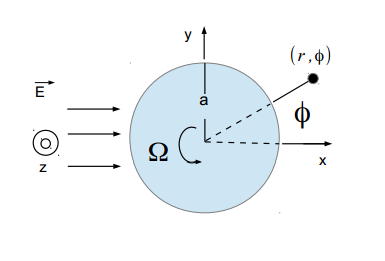Optical Bernoulli Forces Could Steer Objects Bathed in Light, Say Theorists
Theorists have discovered a new optical force that is analogous to the thrust that keeps aircraft aloft and causes tennis balls to swerve.
If you’ve never heard of Bernoulli forces, you’ll certainly have experienced them. These are the forces that keep aircraft aloft, that draw fuel into your car’s carburetor and cause spinning tennis balls to swerve.
It is named after the 18th century Swiss scientist Daniel Bernoulli who discovered that a fluid flowing at high speed has a lower pressure than one flowing at lower speed. When the pressure difference occurs on opposite sides of the same object such as a wing, it experiences a force that pushes the wing from the high pressure region towards the low pressure one.
That raises an interesting question. Can objects sitting in an unconventional fluid-like flow, like a light beam, also experience Bernoulli forces? Today, Ramis Movassagh at Northeastern University in Boston and Steven Johnson at the Massachusetts Institute of Technology in Cambridge, say they can and explore the conditions in which this could happen.
This story is only available to subscribers.
Don’t settle for half the story.
Get paywall-free access to technology news for the here and now.
Subscribe now
Already a subscriber?
Sign in
You’ve read all your free stories.
MIT Technology Review provides an
intelligent and independent filter for the
flood of information about technology.
Subscribe now
Already a subscriber?
Sign in
These guys begin their analysis by imagining a rotating dielectric cylinder, like a glass rod, bathed in a stream of photons. In this analogy, the stream of photons is the fluid and the glass rod is the equivalent of a spinning tennis ball.
In a game of tennis, a spinning ball moving through the air swerves because the pressure on one side of it is greater than on the other. That’s because on one side of the spinning ball, its surface is moving into the airflow but away from it on the other side. That causes a difference in pressure, just as Bernoulli predicts.
Movassagh and Johnson ask whether a similar difference in pressure might arise for a spinning object in a beam of light. They conclude that it does but only if the object is made of a dielectric material, like glass or plastic.
In a dielectric, an external electromagnetic field can penetrate a short depth into the material. When the material is rotating, this interaction generates a force. Movassagh and Johnson calculate that this force is in the same direction as Bernoulli’s force when the material’s electric susceptibility is positive and in the opposite direction when the electric susceptibility is negative.
An interesting corollary is that the force is zero when the material is a conductor. That makes sense. “Because a perfect conductor allows no penetration of the electromagnetic fields, the fields cannot “notice” that it is rotating or be “dragged” by the moving matter,” say Movassagh and Johnson.
There is one caveat, however: this new optical Bernoulli force is tiny. However, they point out that it should be possible to magnify it by exploiting resonant effects. This could be done with multi-layered spheres that can trap light or by using materials in which the interaction with light is enhanced by surface plasmons, for example.
Nobody has ever seen the optical Bernoulli force but with this kind of magnification, it may be possible to see it the lab in the relatively near future.
The only question then will be what optical Bernoulli forces might be used for. Answers please in the comment section below.
Ref: arxiv.org/abs/1305.0317: Optical “Bernoulli” Forces
